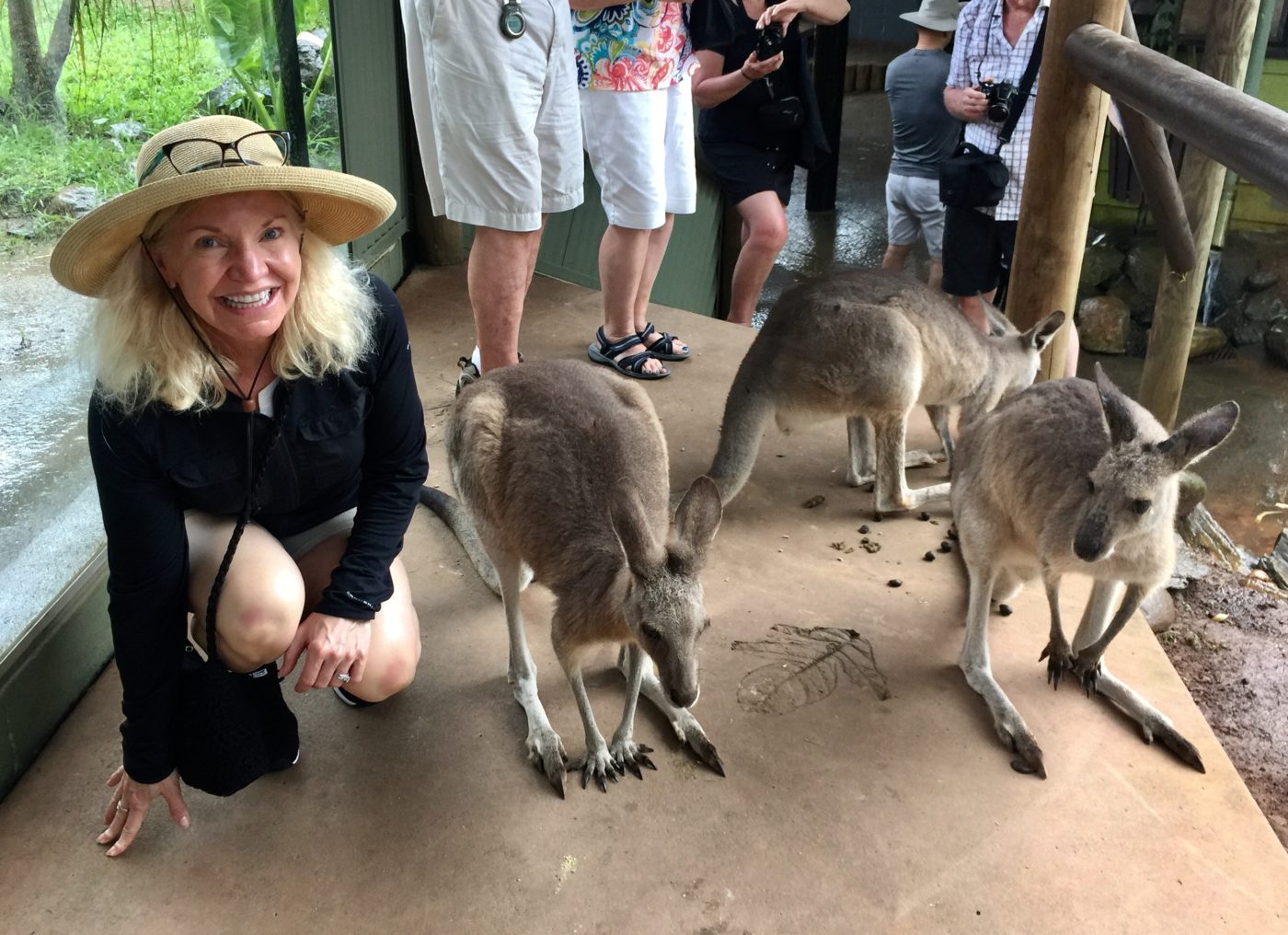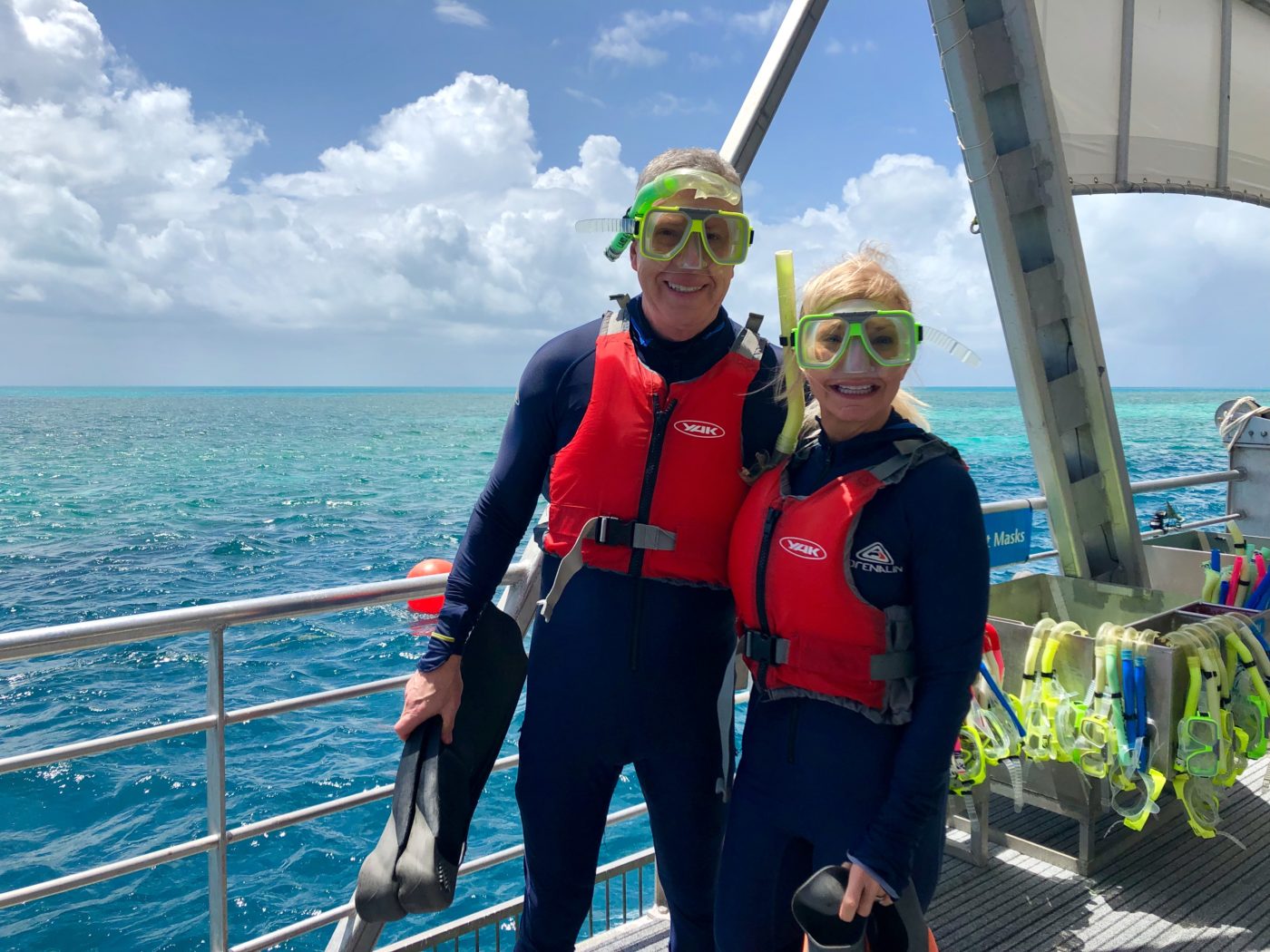The Outback. Ayers Rock. The Great Barrier Reef. These are household names that conjure up images of a world of stark contrasts. The continent of Australia has a sense of natural wonder. The land holds some amazing stories of the earliest ages of our planet and its first life.

The oldest rock crystals in the world, about 4.4 billion years old, have been found in southwest Australia. This area is considered to be some of the original Earth’s crust. The northwest Kimberley range is thought to be the first dry land in the world, rising above the sea about 1.8-2.4 billion years ago. Geologists have identified evidence in the southwest where Australia was once connected to Antarctica and India in the supercontinent of Gondwana.
Reg Morrison covers it all in Australia: Land Beyond Time. There are very few books that you open and learn something significant right from the first page. This is one of those books. Highly recommended. You may only be able to find used versions. Fantastic pictures take you through the history of Planet Earth. You’ll want to troupe all over Australia after finishing the book.
Along the west coast of Australia near Pilbara, there are rock formations that are really the earliest fossilized remains of microbe life. More complex cell structures are preserved in the Bungle Bungles of the northern area near the Kimberley Range. Tracks of the first vertebrate animals to come ashore have been found in the East Gippsland area of southeastern Australia. There are fish preserved from 380 million years ago in rock formations in the Gogo Formation up north. Some of the fish actually have embryos or babies with umbilical cords. These remarkable fossils are brought back to life by Swimming in Stone: The Amazing Gogo Fossils of the Kimberley.
Smack in the middle of the Queensland, which was once an ocean, fossils of the largest marine reptile have been found, dating back over 100 million years. Not far south of that discovery is Lark Quarry, where there is an extensive set of dinosaur tracks which suggest a stampede of small, chicken sized beasts that were cornered by an enormous predator.

One of the iconic geologic attractions of Australia is the massive, red sandstone formation in the center of the continent called Ayers Rock, or Uluru. It is a sacred site for the earliest inhabitants and can no longer be climbed. The aboriginal people have their own interpretations of the stories of these stones, with lessons for all of us about our connection to the Earth. Mingkiri: A Natural History of Uluru by the Mutitjulu Community
Cruising up the northeastern coastline, you will sail among the shoals of the Great Barrier Reef, (shown above), the largest living organism in the world. It can be seen from space. British explorer James Cook literally bumped into it on his first voyage in 1770. (Blue Latitudes: Boldly Going Where Captain Cook Has Gone Before) The tiny organisms simultaneously build the reef and provide the essential food chain for the incredible variety of marine species that live there. Recent changes in the ecosystem are causing some scientists to be concerned for its health and future. Read about this fragile being in A Reef in Time: The Great Barrier Reef from Beginning to End
.
And then along came Man. There is a fascinating summary of on-going research into the DNA patterns of man, called Deep Ancestry: Inside The Genographic Project, by Spencer Wells, and sponsored by National Geographic. The purpose of the study has been to identify the common DNA traits of the several races and cultures of man. You can send them a sample of your DNA and they will send you back an analysis of your composite ancestry. A by-product of the research has been a mapping of many of the migration patterns of early wanderers.
Wells has followed up with The Journey of Man: A Genetic Odyssey (Princeton Science Library). The research suggests that about 50,000 years ago, during a major ice age, some of the early people migrated from Africa to India and into Southeast Asia and then down to Australia. Sea level was as much as 300 feet lower because fresh water was frozen in the expanded Arctic and Antarctic ice caps. This created land bridges that made it possible for people to walk or paddle south through Malaysia and Indonesia to within sight of Australia. Making the final crossing would have certainly been possible in the boats they would have already developed to make it that far.
The aboriginal people may have encountered a much more hospitable terrain than Australia currently presents. However, it is clear they have been managing the millennia of change since they arrived, at least 40,000 years ago. Their concepts of connection to the earth, to their ancestors and descendants, and to the life forces they experience around them are very different than those of western culture.

This unique perspective is reflected in their art. Visit the aboriginal art galleries in any major city for a short education in this timeless culture. One gallery owner told us that many of the principle motifs of aboriginal art were once drawings in the Outback dirt. They often represent a birdseye view of the meaningful landmarks being portrayed. These might be village territories, river beds, or even medicinal bushes. Fascinating and beautiful, you may find something very special to take home with you.
The world of the aboriginal people was created in “Dreamtime” where past, present and future are much more connected in the lives and souls of each person. For an introduction to this fascinating culture, Voices of the First Day: Awakening in the Aboriginal Dreamtime (Inner Traditions). The legends and lessons of the Dreamtime are often related to physical landmarks and geographic features across the wild landscape. The stories have been passed down through the ages in an oral tradition that is still alive. Check out Wise Women of the Dreamtime: Aboriginal Tales of the Ancestral Powers
.
The original spirit beings left traces of their travels in “songlines” that crisscross Australia. If, as the aboriginals do, you can connect with these songlines, they can help you navigate the untracked wilderness. The Songlines, by Bruce Chatwin, is one of the most well-known introductions to these traditions.




